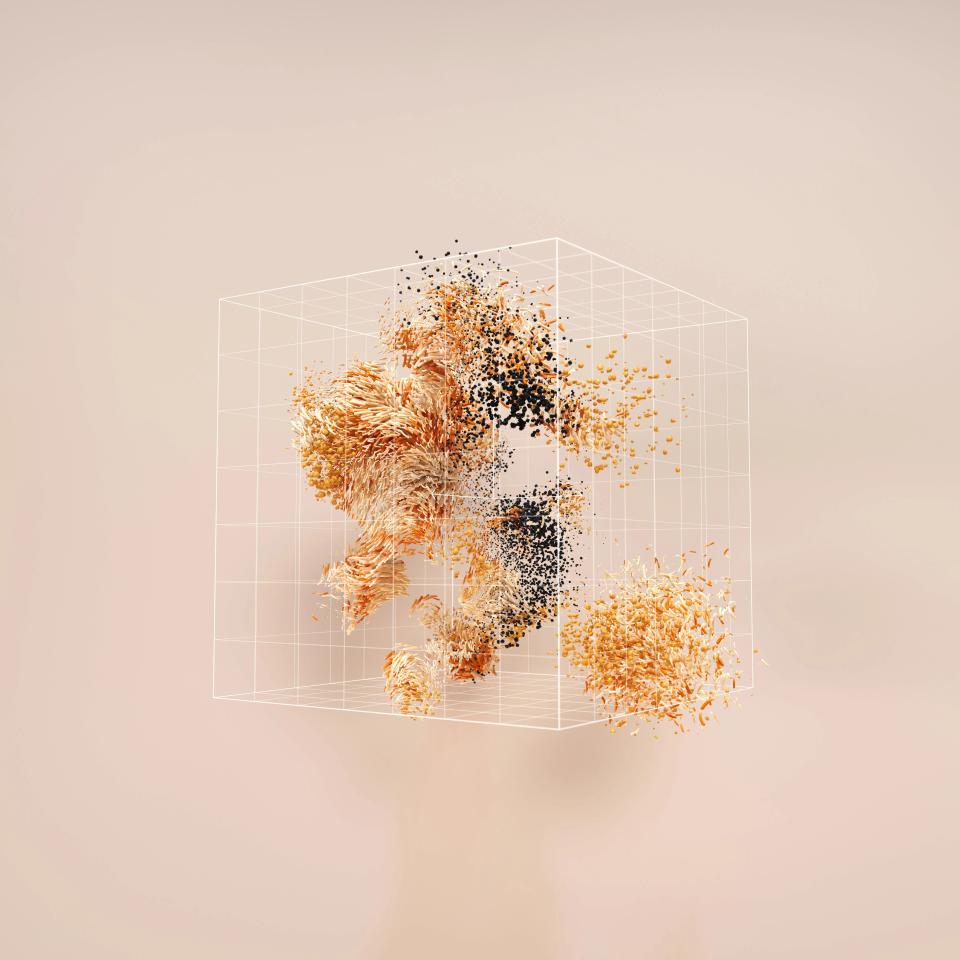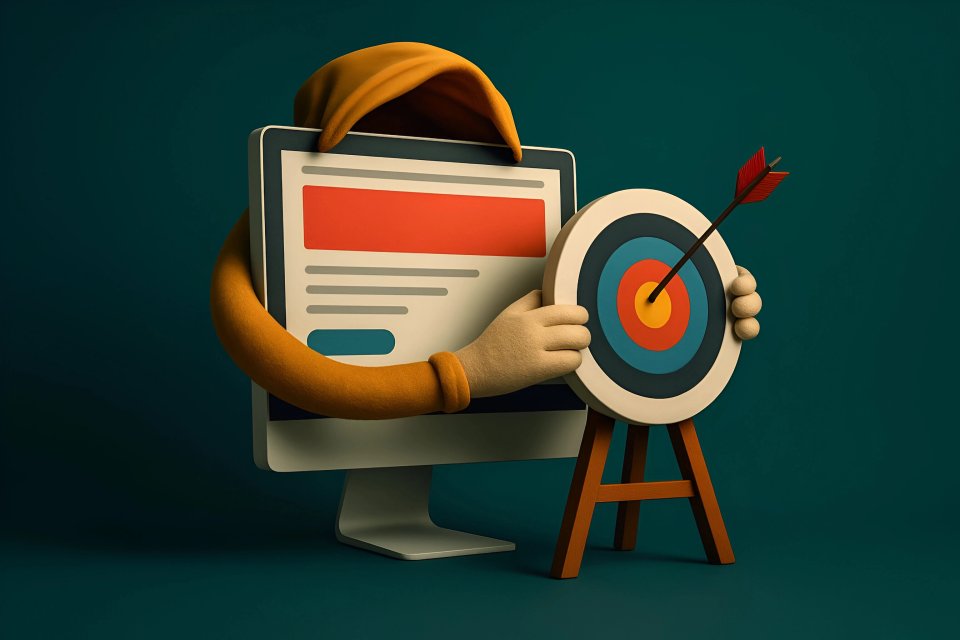In a sea of endless scrolling and fleeting attention, a beautiful logo isn't enough. To be remembered, your brand needs to tell a story. It needs to grab your ideal customer by the heart and refuse to let go.
Here’s the hard truth: many businesses are visually schizophrenic. They have a logo here, a different color palette on social media, and a jumble of fonts on their website. This inconsistency doesn't just look unprofessional; it actively confuses customers, dilutes your message, and sabotages the trust you’re trying so hard to build.
The solution isn't just better design; it's strategic visual storytelling. This is the art and science of using every visual element—color, typography, imagery, and composition—to communicate your brand's core narrative, values, and promise. In this guide, we’ll break down the essential techniques for using strategic visual storytelling for a cohesive brand identity, transforming your brand from a simple business into an unforgettable experience.
What is Visual Storytelling in Branding? (And Why It’s Your Secret Weapon)
Let’s be clear: visual storytelling is far more than just making things look pretty. It’s the intentional, strategic use of visual language to convey a narrative that resonates on a primal level. It’s about crafting a world that your customer wants to be a part of, where every visual cue reinforces who you are and what you stand for.
The real power lies in the "cohesive" element. Cohesion is what turns a collection of individual design assets into a powerful, unified story. This consistency is the bedrock of recognition and trust. According to research highlighted by Forbes, brands that maintain consistency can see a revenue increase of up to 33%, because customers learn to recognize and trust what is familiar.
Why should you care? Because a strong visual story is your ultimate competitive advantage.
- It Builds an Unbreakable Emotional Connection. Stories bypass the logical brain and hit straight to the heart. Visuals can instantly evoke feelings of security, excitement, trust, or aspiration, forging a bond that facts and figures never could.
- It Makes You Instantly Memorable. The human brain is wired for visuals. As the Nielsen Norman Group explains in their research on visual storytelling in UX, our brains process images a staggering 60,000 times faster than text. A powerful visual story doesn't just get seen; it gets remembered.
- It Differentiates You in a Crowded Market. Your competitors can copy your product, your pricing, or your features. But they can never copy your unique story. This is the core of developing powerful, cohesive branding strategies that give you an unfair advantage.
- It Becomes Your Marketing North Star. When your visual identity is clear, creating new assets—social media posts, digital ads, landing pages—becomes faster, easier, and infinitely more effective. The story is already written; you're just creating new chapters.
The 5 Core Techniques for Crafting Your Visual Brand Story
So, how do you actually build this powerful visual narrative? It’s not about guesswork. It’s about following a proven framework that turns abstract ideas into a concrete, compelling identity.
Technique 1: Define Your Narrative Foundation (The Brand Strategy)
Before you pick a single color or font, you must know your story. This is the most critical step, and it’s where most brands fail. You need to ask the hard questions: What is our fundamental "why"? Who is the hero of our story (hint: it’s your customer)? What great challenge do we help them overcome?
This isn't just marketing fluff; it's the strategic core of your entire brand. As the Harvard Business Review notes, storytelling is a core business strategy that guides everything from product development to customer engagement. Your narrative foundation dictates every visual choice you make from this point forward.
This foundational work is the very heart of our Brand Strategy service at CaptivateClick. We partner with clients to unearth the core story that will serve as the blueprint for their entire identity, ensuring every element has a purpose.
Technique 2: Develop a Purpose-Driven Color Palette
Color is emotion. It’s a shortcut to the subconscious, and your choices must be deliberate. This goes far beyond basic color psychology; you must connect your color choices directly to the specific emotions of your brand story.
For example, a tech startup with a story of "disruptive innovation and boundless energy" might use a stark, professional base with a single, vibrant accent color like electric green to signify a jolt of newness. In contrast, a wellness brand telling a story of "calm, grounding, and natural healing" would lean into a palette of soft, earthy tones. As Adobe's experts on color in branding explain, color is a primary way consumers identify, remember, and choose brands.
To ensure balance, apply the classic 60-30-10 rule: 60% for your dominant, primary color; 30% for a secondary color; and 10% for an accent color that makes key elements pop. This creates a visually pleasing hierarchy that guides the eye and reinforces your narrative without overwhelming the senses.
Technique 3: Choose Typography That Has a Voice
Think of your fonts as the tone of voice for your brand. Are you a wise, authoritative guide? A modern, approachable friend? A luxurious, exclusive confidante? Your typography must speak in a voice that matches your story.
As detailed by the design experts at Smashing Magazine, typography profoundly shapes brand perception. A classic serif font like Garamond can feel traditional, reliable, and authoritative. A clean sans-serif font like Helvetica or Montserrat feels modern, direct, and accessible. A flowing script font can feel personal, elegant, and creative.
The key is to create a typographic hierarchy that supports your narrative. The combination of your headline font (the attention-grabber) and your body font (the storyteller) creates a conversational rhythm. This is a crucial part of mastering your business branding with a distinct visual identity.
Technique 4: Curate a Signature Imagery and Iconography Style
Your images and icons are the scenes and characters in your visual story. This is one of the most critical components of your visual identity design, and it demands absolute consistency. Are your photographs bright, polished, and aspirational, showing a perfect future? Or are they candid, authentic, and human-centric, capturing real moments?
The same goes for your iconography. Are your icons simple, clean, and linear, communicating efficiency and clarity? Or are they detailed, hand-drawn illustrations that convey craft and personality? There is no right answer—only the answer that aligns with your core narrative.
This signature style must be applied relentlessly across your website, advertisements, social media, and internal documents. It’s this repetition that burns your brand’s feeling and atmosphere into the minds of your audience.
Technique 5: Weave it All Together with Brand Guidelines
A cohesive identity does not happen by accident; it is maintained by discipline. The final, crucial step is to codify all your visual decisions into a comprehensive set of brand guidelines. This document is the single source of truth for your brand's visual story.
This rulebook dictates everything: proper logo usage and spacing, exact color codes (HEX, RGB, CMYK), typography hierarchy and sizing, and the defined style for all photography and iconography. According to 99designs, clear brand guidelines are essential for keeping your visual identity consistent, especially as your team grows and you work with outside partners.
This is precisely why we create comprehensive Brand Guidelines for our clients at CaptivateClick. This document empowers your entire team—from marketing to sales to product development—to tell the same powerful, cohesive story on every platform, every single time.
Case Study in Action: From Concept to Cohesive Identity
Theory is one thing, but seeing it in action is another. Think of a powerhouse brand like Nike. Their visual story isn't just about shoes; it's about empowerment, grit, and overcoming limits. This is told through dynamic, high-contrast photography of athletes pushing their boundaries, bold and impactful typography, and the iconic, minimalist "swoosh" that signifies action.
At CaptivateClick, we live and breathe these principles. When we partner with a client, our first step is always to understand their unique story. For a brand like Fjällbris, whose essence is rooted in the tranquility and raw beauty of Scandinavian nature, the visual story was paramount.
We brought this narrative to life through a carefully curated palette of cool blues and earthy neutrals, reflecting the mountains and fjords. We chose clean, minimalist typography that speaks of Scandinavian design simplicity. We filled their digital presence with breathtaking landscape photography. The result is a cohesive digital experience that doesn't just sell a product; it instantly transports you to their world and communicates their brand promise before you read a single word.
Your Action Plan: 3 Steps to Start Building Your Visual Story Today
Feeling inspired? Good. Now it’s time to take action. Here are three simple steps you can take right now to begin building a more cohesive visual identity.
Step 1: Conduct a Visual Audit
Gather every single one of your current brand assets: your website, social media profiles, business cards, email signatures, sales decks, and advertisements. Lay them all out. Now, ask yourself honestly: Are they telling a single, clear story? Or are they a chaotic mess? Identify the inconsistencies—this is your starting point.
Step 2: Create a Story-Driven Mood Board
Forget about what you "like." Instead, focus on what feels right for your brand's story. Use a tool like Pinterest to create a private board and collect images, color palettes, textures, and font examples that visually represent the core narrative and emotion you want your brand to convey. This becomes the creative brief for your new, cohesive identity.
Step 3: Prioritize Your Key Touchpoints
You don’t have to fix everything overnight. Start by applying your new, cohesive visual identity to your single most important customer-facing asset—which, for most businesses, is the website. A strong and intentional UI/UX design is the foundation of your digital visual story, and it's the best place to make the biggest impact first.
Conclusion: Tell a Story That Captivates and Clicks
Let's bring it all home. A cohesive brand identity isn't a luxury reserved for mega-corporations. It is an essential, strategic tool for any business that wants to build trust, create a deep emotional connection, and stand out in a world of noise. It’s built on the unshakable foundation of strategic visual storytelling.
Your brand is so much more than what you sell. It's the story you tell and, just as importantly, how you choose to show it. Make it a story worth remembering. Make it a story that captivates your audience and compels them to click.
Ready to define your narrative and build a visual identity that truly connects with your audience?
The branding experts at CaptivateClick are here to help. From brand strategy and logo design to creating comprehensive visual guidelines, we build brands that don't just get seen—they get remembered. Contact us today for a brand consultation and let's start telling your story.













